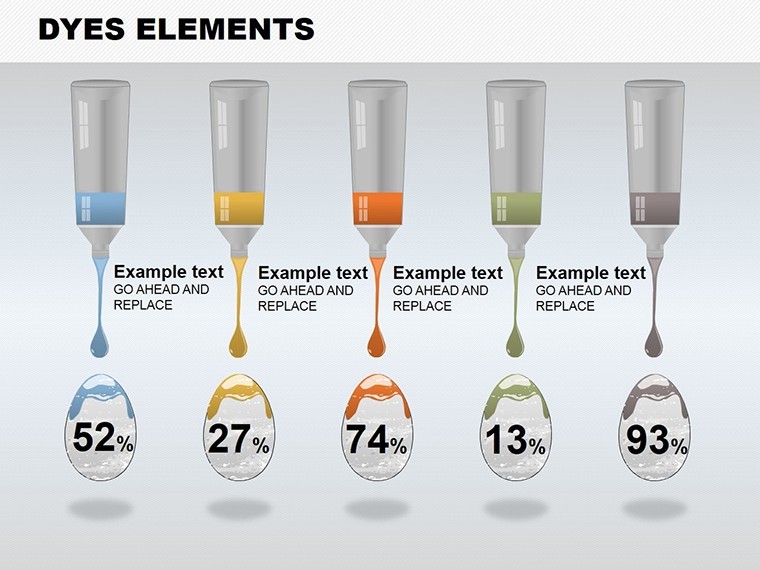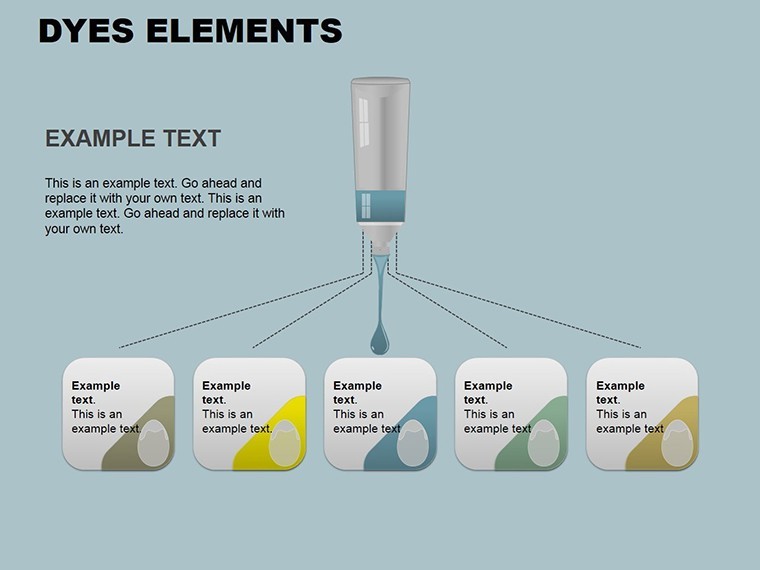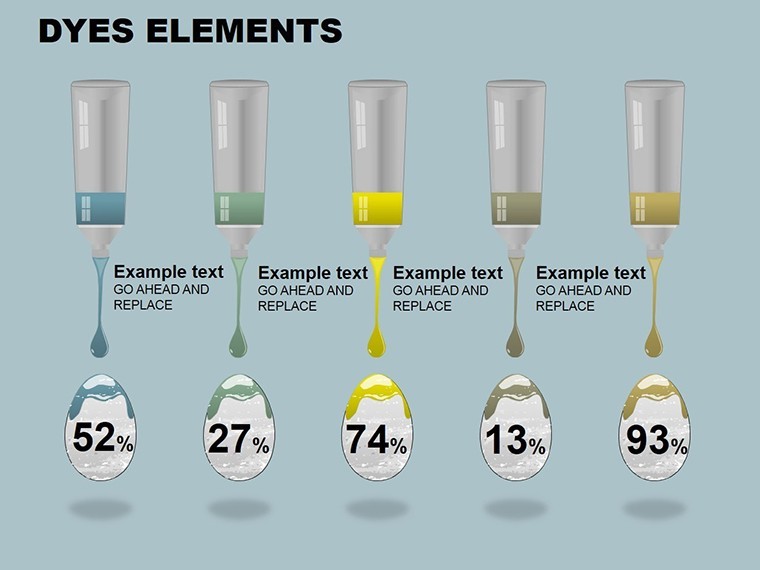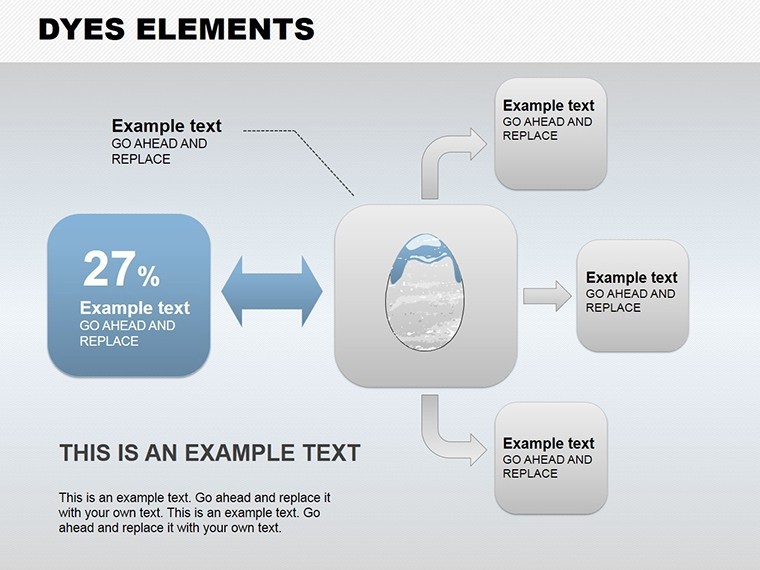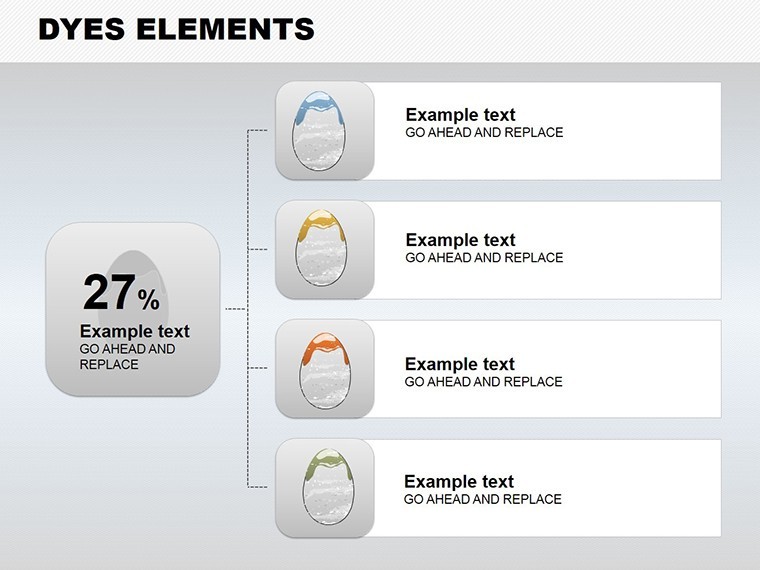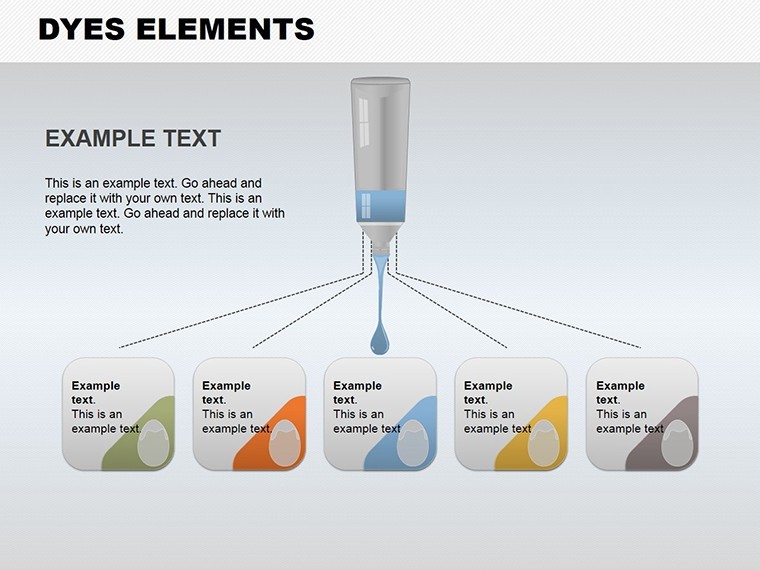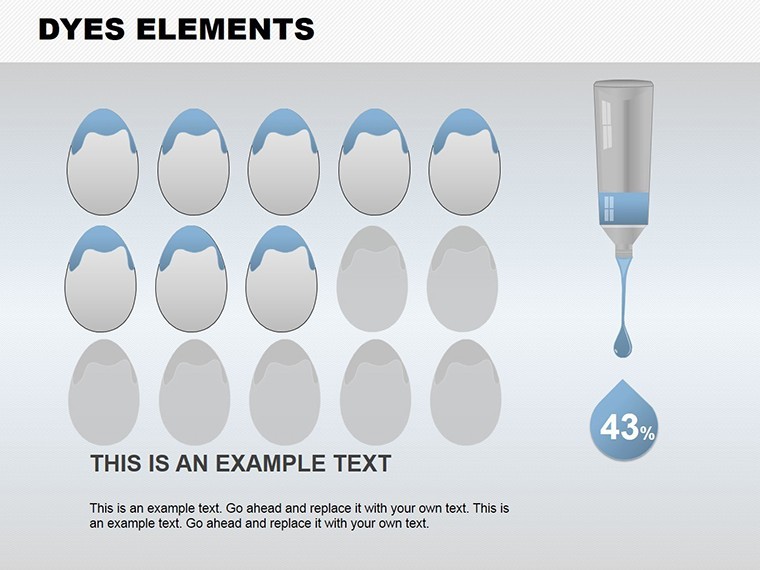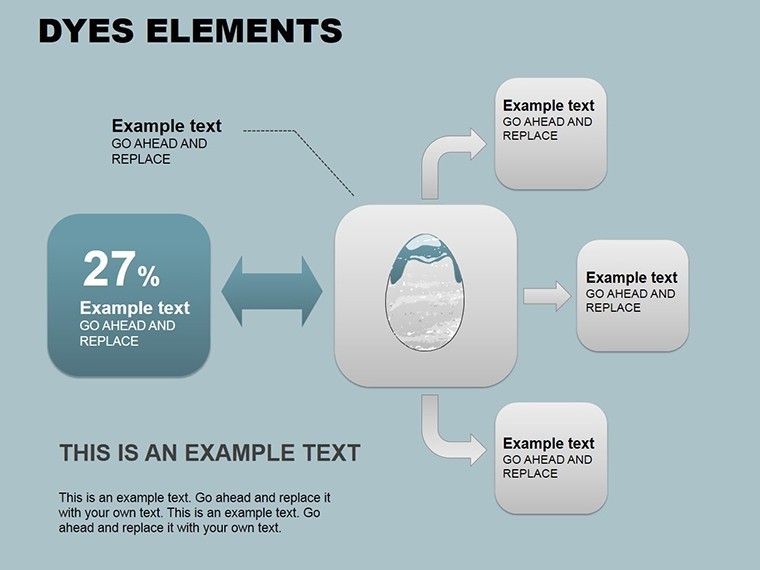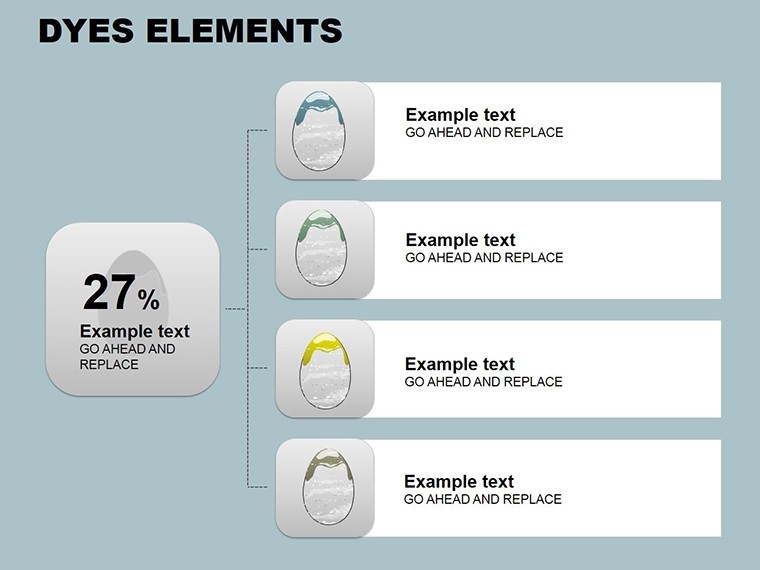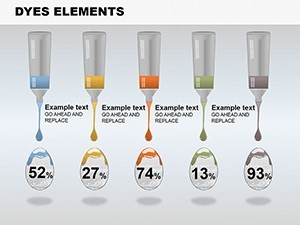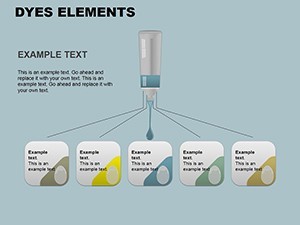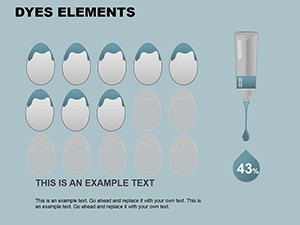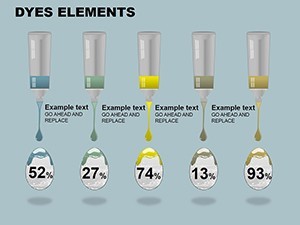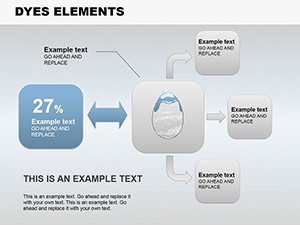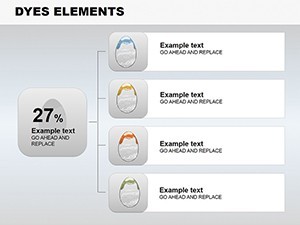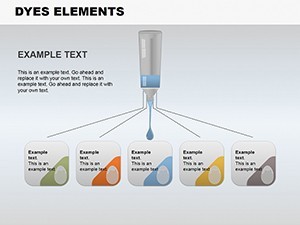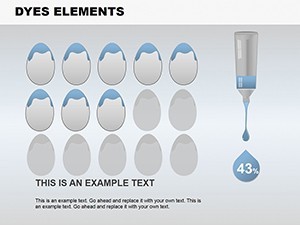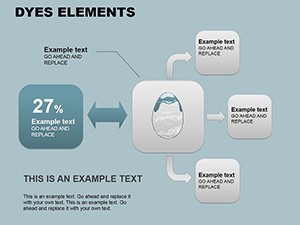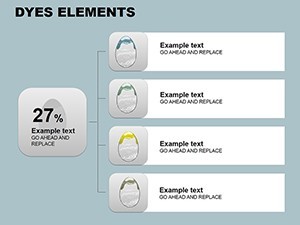Promo code "00LAYOUTS"
Dyes Elements Keynote Charts for Color Mixing - 10 Slides
Type: Keynote Charts template
Category: Illustrations
Sources Available: .key
Product ID: KC00137
Template incl.: 10 editable slides
Color is the essence of creativity, and mastering its mixtures can turn ordinary designs into extraordinary masterpieces. Our Dyes Elements Keynote Charts template, with 10 thoughtfully designed editable slides, is your creative companion for exploring color dynamics. Tailored for designers, artists, and educators, it demonstrates how to blend primary colors into a full spectrum, even with limited resources. Ideal for school projects, design workshops, or branding sessions, these slides use illustrative charts to show mixing ratios, harmonies, and applications. Forget rigid palettes - this template encourages experimentation, allowing you to edit dyes, shades, and texts for personalized explorations. Compatible with Keynote, it's a bridge between theory and practice, helping users visualize concepts like additive vs. subtractive mixing. Whether teaching color theory in art class or pitching hue strategies to clients, this tool sparks imagination, making color education engaging and accessible. Dive in and mix your way to vibrant presentations that color outside the lines.
Creative Blending with Limited Palettes
This template demystifies color creation, starting with basics like red, yellow, and blue. Slide 1 offers a wheel chart for primary mixes, evolving to slide 6's gradient scales for tertiary shades. Vector elements ensure edits don't compromise vibrancy, aligning with principles from Pantone's color guides. Designers can simulate dye interactions, adjusting opacities for realistic blends - useful in fashion or graphic projects. Unlike standard color pickers, these charts provide contextual examples, such as mixing for seasonal themes, boosting creativity as noted in studies from the Color Association of the United States.
Core Features for Color Enthusiasts
- Interactive Mixing Charts: Editable wheels and grids to experiment with ratios.
- Vector Scalability: Resize without loss, perfect for detailed prints.
- Shade Variations: Pre-built tints and tones for quick references.
- Easy Customization: Change dyes, labels, and backgrounds intuitively.
- Educational Layouts: Structured for lessons or demos, with note spaces.
These make it a standout for creative fields, offering more than visuals - it's an interactive learning aid.
Use Cases in Design and Education
For educators, use slide 4's Venn diagrams to teach overlaps in color theory. Step-by-step: Select a base color, mix via sliders, and preview results. In design studios, apply to mood boards, blending for brand palettes. Example: A graphic designer, drawing from Adobe Color tools, used similar charts to develop a campaign palette, enhancing cohesion. For schools, it's engaging for STEM-art crossovers, visualizing chemistry in dyes.
Artistic Tips for Mastering Mixes
- Start simple: Mix primaries before advancing to complements.
- Use LSI like 'hue saturation' for precise adjustments.
- Test in context: Apply mixes to sample designs within slides.
- Incorporate feedback: Share for collaborative color critiques.
- Explore digitally: Export to apps for further experimentation.
From art pros like those at RISD, these tips foster innovation.
Ignite Your Color Journey Today
With 10 slides of pure potential, this Dyes Elements template is a must for color lovers. Affordable and inspiring, download to blend brilliance into your work.
Frequently Asked Questions
How do I mix colors in the template?
Use editable charts to adjust ratios and preview blends.
Is it for beginners?
Yes, intuitive for all levels with guided layouts.
Can I add custom dyes?
Easily import colors or edit existing ones.
What formats are available?
.key files for Keynote users.
Suitable for professional design?
Absolutely, for branding and creative pitches.

